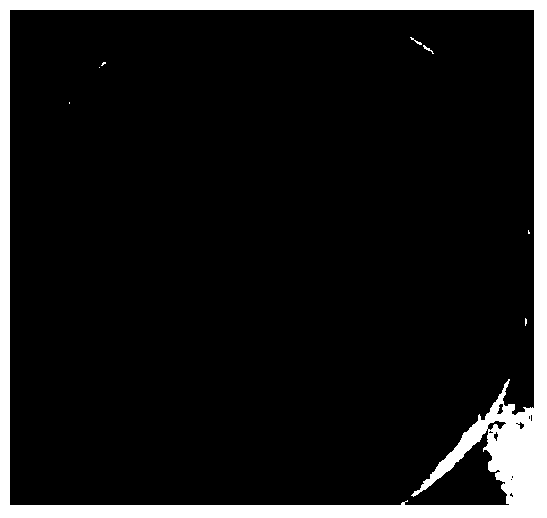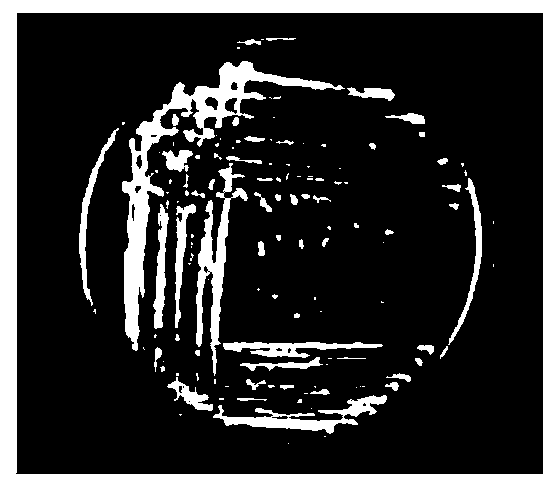Cellulose-degrading bacteria with phosphate-dissolving capability and application thereof
A cellulose degradation and bacteria technology, applied in the application, bacteria, preparation of organic fertilizers, etc., can solve the problems of refractory utilization and inability to decompose, and achieve the effect of rapid reproduction
- Summary
- Abstract
- Description
- Claims
- Application Information
AI Technical Summary
Problems solved by technology
Method used
Image
Examples
Embodiment 1
[0029] Isolation, purification and preservation of strains
[0030] The rotten straw and soil of the paddy field of Pujiang Base of Jiaotong University, Pujiang Town, Minhang District, Shanghai were taken as samples. After different samples were ground and mixed, 10 g was taken, placed in 100 mL enrichment medium, and incubated at 30°C and 150 rpm. Every 5 days, 10% of the inoculum was transferred to another enriched medium, and the acclimatization was repeated 4 times. The enrichment medium adopts the medium with CMC-Na as the sole carbon source.
[0031] Take 100 μL of the enrichment solution and spread it on the CMC-Congo red medium plate, then culture it upside down in a constant temperature and humidity incubator at 32°C, and observe after 3 days. As a result, a transparent hydrolysis circle appears on the plate, such as figure 1 . Pick a small amount of bacteria and streak on LB solid medium until a single colony is obtained, such as figure 2 As shown, the obtained...
Embodiment 2
[0033] Identification of strains
[0034] Combining bacterial Biolog GP2 and 16S rDNA V3 ( Figure 4 ) region sequence alignment, and identify the bacteria Bacillus, the taxonomic species named Bacillus pumilus (Bacillus pumilus).
[0035] The Bacillus pumilus was named JSD-12, and it was deposited in the General Microorganism Center (CGMCC) of the China Committee for the Collection of Microbial Cultures (CGMCC) on July 15, 2013. Address: No. 3, Yard No. 1, Beichen West Road, Chaoyang District, Beijing, China Institute of Scientific Microbiology, deposit number is CGMCC No.7923.
Embodiment 3
[0037] Determination of Optimal Growth Curve
[0038] After measurement, it was determined that the most suitable medium for the bacteria was LB liquid medium, and the pH was adjusted to 7.0. The activated bacteria were inoculated into the LB liquid medium, and the inoculation amount was 1.0% of the volume of the medium, and cultured on a shaker at 32°C and 150rpm. When the incubation time is 1, 2, 4, 6, 8, 10, 12, 14, 18, 22, 26, 30, 34, 38 hours, measure the OD of the bacterial solution 600 value, draw a curve as Figure 5 shown.
[0039] The components of the LB liquid medium are: 10 g of peptone, 5 g of yeast extract, 10 g of NaCl, 1000 mL of distilled water, and pH 7.0.
PUM
 Login to View More
Login to View More Abstract
Description
Claims
Application Information
 Login to View More
Login to View More - R&D
- Intellectual Property
- Life Sciences
- Materials
- Tech Scout
- Unparalleled Data Quality
- Higher Quality Content
- 60% Fewer Hallucinations
Browse by: Latest US Patents, China's latest patents, Technical Efficacy Thesaurus, Application Domain, Technology Topic, Popular Technical Reports.
© 2025 PatSnap. All rights reserved.Legal|Privacy policy|Modern Slavery Act Transparency Statement|Sitemap|About US| Contact US: help@patsnap.com



